Formation of the Kuban Army
On the other hand, the vast land holdings of Zaporozhye seemed rather tempting for the official colonialists of the region. Justifying complaints against the army, the ataman Kalnyshevsky wrote in one of his letters to Potemkin: "Why does not he who does not seize our lands and does not use them complain about us. Only those shout at us who are mercenary from us." The interests of the Novorossiysk Governor-General and the Cossacks were in conflict. To secure the rear of his governorship, Potemkin had to destroy Zaporozhye with his vast possessions, which he did in the 1775 year. The consequences confirmed the instructions of the cat. When the Zaporozhye Cossacks were destroyed, Prince Vyazemsky received during the division of Zaporozhye lands 100 000 tithe, including the places that were under both Sich koshas, almost as much went to Prince Prozorovsky and smaller shares to many others. But the disbandment of such large military organizations as the Zaporizhian Sich and the Dnieper Cossacks brought a number of problems. Despite the departure of a part of the Cossacks abroad, about 12-ti thousand Zaporozhets remained in the citizenship of the Russian Empire, many did not withstand the strict discipline of regular army units, however, the empire could serve and wanted to continue. Circumstances forced Potemkin change temper justice with mercy, and he, as "chief commander" of the attached Black Sea coast, decides to take advantage of the Cossack military force.
The idea of the final annexation of the Crimea to Russia and the inevitability of a new war with Turkey forced Prince Tauride to seriously take care of restoring the Dnieper Cossacks. In 1787, the Russian empress Catherine II undertook her famous journey through southern Russia. July 3 Prince GA in Kremenchug Potemkin introduced a number of her former Zaporozhye elders who brought the empress and petition for the restoration of the troops Zaporizhzhya. During this period, the Cossack officers' aspirations miraculously coincided with the intentions of the Russian government. In anticipation of the impending war with Turkey, the government sought various ways to strengthen the country's military potential. One such measure was the creation of a number of Cossack troops. The day of birth of the Black Sea troops can take the order of Prince GA Potemkin from 20 August 1787 of the year: "In order to have military teams of volunteers in the governorship of Yekaterinoslav, I delegated second-major to Sidor Bely and Anton Holovaty to gather hunters and equestrian and footmen for the boats from those who settled in this governorship of Zaporozhye Cossacks who served in the former Sich." By order of the empress, it was decided to restore the Zaporozhye Cossacks and in 1787, A.V. Suvorov, who, by order of Empress Catherine II, organized new army units in southern Russia, took up the formation of a new army from the Cossacks of the former Sich and their descendants.
The great warrior treated all assignments extremely responsibly and also to this. He skillfully and thoroughly filtered the contingent and formed the "Loyal Zaporozhtsev Army", and for military merits 27 in February 1788 in a solemn ceremony Suvorov personally handed the foremen flags and other kleynods that were confiscated in 1775 year. The assembled Cossacks were divided into two groups - the cavalry, under the command of Zechariah Chepegi, and the rook infantry, under the command of Anton Golovaty, the general command of the Cossacks was entrusted by Potemkin to the first ataman of the revived troops - Sidor Bely. This Army, renamed 1790 in the Black Sea Cossack Army, very successfully and adequately participated in the Russian-Turkish war 1787 — 1792. The Black Seamen really showed miracles of courage in this war and in practice proved their combat suitability and the right to independent existence. We can say that they shed blood in that war and then bought land in the Kuban. But the Cossacks expensive was given the victory in which they took a prominent part, the army lost many soldiers and ataman Sidor Bely received a mortal wound in battle, and within three days after the deceased. All the time his four-year existence, with 1787 1791 of the year, the Black Sea Cossacks held exclusively in hostilities.
The former enemy of the Zaporozhian Cossacks, Prince Potyomkin of Tauride, turned into a "merciful father," the army returned all the regalia that the Zaporozhye Cossacks always cherished, and finally, Potemkin himself assumed the title of hetman of the Cossack troops. But, to the universal grief of October 5 1791, the Potemkin died unexpectedly for everyone. Deprived of its comprehensive protection and patronage of loyal Cossacks felt very uncertain on the allocation of land between the Dnieper and the Bug. Despite the military merit of the Cossacks and the permission of the government to settle down and acquire a farm, the local administration and landowners put all sorts of obstacles to Cossack colonization for the former Zaporozhye. Meanwhile, the Cossacks had already witnessed how their ancient Zaporizhzhya lands turned into private property before their eyes. Therefore, at the end of the war, they planned to move to the lower reaches of the Kuban, and on the general military Rada decided to send, above all, experienced people to inspect Taman and the adjoining lands. Such person was elected military esaul Moky Gulick with the Cossacks reconnaissance team, which was instructed to carefully examine the nature of the terrain and evaluate the merits of land. Then, also according to the verdict of the military Rada, military judge Anton Golovaty with several military comrades were elected deputies to the empress for "emancipating the rights to eternal quiet hereditary possession" of the land that the Cossacks had outlined for themselves. It should be said that this was not the first deputation of Anton Golovaty to Petersburg.
In the 1774, the decision of Parliament, he then assistant troop clerk, was sent as a part of the Cossack deputation with a similar mission. But the deputation, at the order of the Rada, then took a completely counterproductive position. Armed with numerous documents on the rights of the Cossacks on Zaporizhzhya lands, they tried to defend the Sich in St. Petersburg. But their documents did not make any impression in Petersburg, and the manner of “swing the law” caused a rejection at all. The deputation was expected to fail, and the Cossacks went home without a lonely meal. The news of the defeat of General Tekeli Sich caught the delegates on the way from St. Petersburg and made a painful impression. Zakhary chepiha Holovaty and even wanted to kill himself. But the mind prevailed over emotions, and the foremen confined themselves to the old, in such cases, military custom, the departure to a long and deep binge, which, in general, saved them from repression. Coming out of the binge, the commanders realized that life with the rout of the Sich was not over, and went to serve in the Russian army, initially with the rank of second lieutenant. As is well known skill not spend on drink and 1783, Captain zakhary chepiha and Holovaty, according to the Little Russian securities are sent at the head of the team of volunteers under the common origin of Suvorov pacify rebellious Crimea, a familiar thing for Cossacks usual. And in 1787, the second major Holovaty, among other elders were instructed to collect the "Army of the Faithful Zaporozhets." This time, minding the past failure, the Cossacks approached the deputation to Petersburg more thoroughly. In the admonition and petition of the Rada, not a word was said about previous rights, emphasis was placed on the merits of the Cossacks in the last Russian-Turkish war and on other things, primarily on creating a positive image of Zaporizhzhya Cossacks.
Anton Golovaty was not only a brave commander of the Zaporozhye rook rati, but also a major Cossack entrepreneur, as well as, in modern language, a talented bard. He sang Cossack songs sincerely and beautifully, accompanying him on pandora, composed songs himself. With them, the delegates took a whole cultural landing, in the form of a dashing Cossack song and dance ensemble. Zaporozhye artists fascinated first the empress, then the whole noble Petersburg. Cossack tradition says that the Empress many nights on end listening to intimate Little Russian songs performed by Holovaty and Cossack Choir. The days of Zaporizhzhya culture in St. Petersburg dragged on, but Holovaty didn’t hurry; he was interested in a general positive attitude towards the Cossack idea of resettlement to Kuban by the empress, the courtyard, the government and society.
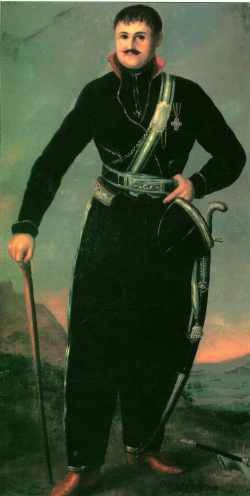
Ris.1 the Army Judge Anton Holovaty
Meanwhile, the Parliament, having received favorable attention from the scouts from the Kuban and from delegates from St. Petersburg, without waiting for official permission, started the preparation of resettlement. Local authorities did not interfere. There was unanimous rare circumstance when the first three divergent aspirations vector formed in one, namely:
- the desire to rid the Ukraine authorities are now rear Dnieper region from the most hectic of Zaporizhzhya Cossack element
- the desire of the authorities of New Russia and the Russian government to strengthen the borders of the empire in the North Caucasus by the Cossacks
- Cossacks desire to move to the border, away from the eye Tsaryova and ever, closer to the war and production.
Anton Holovaty knowingly bore his name. In Petersburg, he set everything in motion, and his acquaintance with strong people, and a little Russian song, and jokes, and humor and eccentricities of a simple-looking Cossack-Little Russia. This remarkably intelligent and in its time well-educated Cossack so successfully completed the work entrusted to him that the most important desires of the troops were recorded in letters of charity in almost genuine expressions of Cossack instructions and petitions. The result of the deputation in St. Petersburg were two letters of grant from 30 June and from 1 July 1792 on the return of the Black Sea Troops to the lands "on Taman, with its surroundings", and these neighborhoods, by the space they occupied, were 30 times the entire Taman Peninsula . True, it was not small business, Taman and the surrounding area needed to be settled, mastered and kept. Taman and the lower reaches of the right bank of the Kuban were deserted at that time.
The fact is that Kuchuk Kainarji 1774, Russia acquired the Azov coast and decisive influence in the Crimea. But the Turks agreed to these conditions only because of the prevailing difficult circumstances and were not in a hurry to fulfill these conditions. They will not withdraw its troops from Taman, Russia raised against the Crimean and Nogai Tatars and other peoples of the Caucasus and were preparing for a new war. Under the influence of the Turks in the Crimea and the Kuban, a mutiny began, but parts of the Prozorovsky corps under the command of Suvorov entered the Crimea and Khan was a supporter of Russia Shagin_Girey. After restoring order in the Crimea, Suvorov was appointed head of troops in the Kuban and began to take measures to pacify the region. The main threat was the raids of the mountain peoples. Suvorov made a reconnaissance, outlined the places for the construction of fortresses and proceeded to their construction. To strengthen the troops, he asked to send him a Cossack. But the Zaporozhye Cossacks at that time were in disgrace and were considered unreliable, and there were not enough donts for everything, and they did not want to move from the dear Don to them. Therefore, on the reclaimed territory it was moved from the Dniester, Prut and Danube sworn to obey and Russian Nogai Horde. Resettlement Horde could not live in the steppes between the Don and Kuban, the conflict began with the Cossacks and the Circassians. Russian authorities decided to resettle the Volga Nogai. In response, the Horde rebelled and Potemkin decided to postpone this decision. But Suvorov was adamant and with his corps and Don Cossacks moved up the Kuban. The horde was crushed and went to the Turkish borders, followed by thousands of Kuban and Crimean Tatars, frightened by the Suvorov massacre, along with Khan Shagin-Girey. So even in the 1784 year, the famous Suvorov seemed to have deliberately prepared the region for accepting the Black Sea people, evicting the last of its inhabitants - the Nogais. In the Azov Sea, the ancient cradle of its kind Cossack, Cossacks - descendants of the legendary Cherkasov kaysakov - returned after seven hundred years of being on the Dnieper, with the language, which became at that time one of the dialects of the Cossack speech.
Chernomorets moved in several streams. Without waiting for the deputation to return from St. Petersburg, in the middle of July 1792, the first group of 3847 Rook Cossacks (then Marines) headed by Colonel Savva Belyy went out on rowing ships from the mouth of the Dniester to the Black Sea and went to new lands. On August 25, almost a month and a half after the start of the sea voyage, the Black Sea people landed on the coast of Taman.
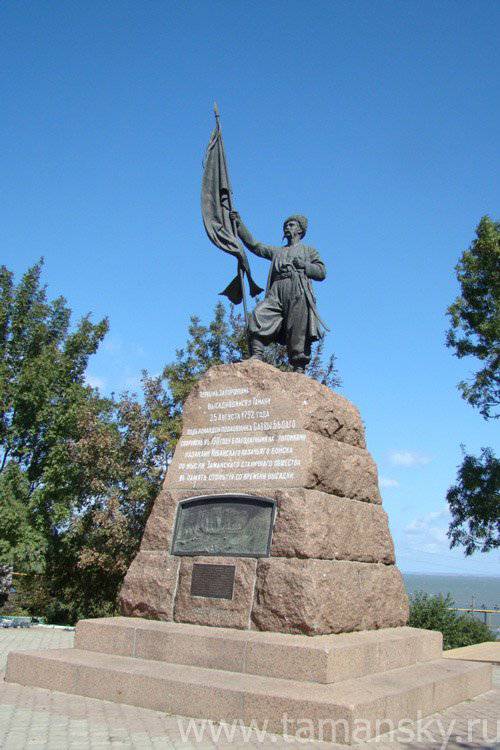
Fig. 2 Monument to the Cossacks at their landing site in Taman
Two Cossack foot regiments under the command of Colonel Kordovskiy and part of Cossack families passed by land across the Crimea, crossed the Strait of Kerch and arrived in Temryuk in October. In early September, the Kuban went from the banks of the Dniester large group under the Black Sea Cossack chieftain Zacharias zakhary chepiha. The detachment, which included three cavalry and two foot regiments, a military headquarters and a wagon train, had to overcome a long difficult path, crossing the Dnieper, Don and many other rivers. Having rounded the Sea of Azov, at the end of October, this group of Black Sea people approached the former residence of Shagin-Giray in the Kuban, the so-called Khan's town (present Yeisk) and stayed there for the winter.
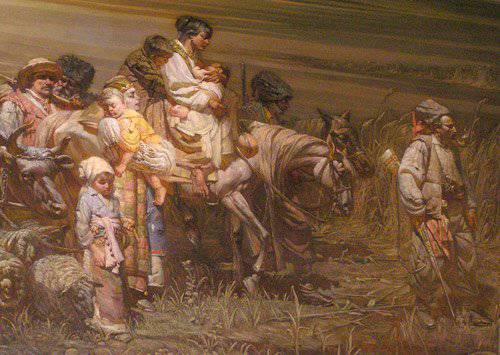
Fig. 3 Relocation
In the spring the Cossacks of the town of Khan went to the side of the Ust-Labinsk strengthening, and then further down the Kuban. In the area of the tract Karasunsky Kut, the Black Sea people found a convenient place for the location of the military camp. The peninsula is formed by a sharp bend in the Kuban and runs into her Karasun River, it is the best suited for settlement. The turbulent waters of the Kuban protected the chosen place from the south and west, and Karasun covered the east from the east. Already in early summer, here, on the high right bank, the Cossacks set about building a fortress, which then became the center of the entire Black Sea army. Initially, the residence of the ataman was called the Karasun Kut, sometimes simply Kuban, but later, in order to make the Empress nice, they renamed Ekaterinodar. Fortifications of the fortress were created according to old Zaporozhye traditions, there were also fortified gates - bashta. In terms of its location and plan, the fortress was very similar to the New Sich. In the center of Ekaterinodar, as in the Zaporizhia Kosh, the Cossacks put a marching church, brought from the Black Sea, along the earthen ramparts there were smoking, in which unmarried (homeless) Cossacks-seriachs (siroma) and service cossacks lived. The names of the kuren remained the same, Zaporozhye, among others, and the legendary Plastunovsky kuren. Inhabiting the Kuban, the Cossacks built several fortified posts on the coast of the Kuban border.
What then represented this now blessed land? For centuries, many ethnic groups, who at various times lived in these parts and from which, by the end of the 18th century, even memories didn’t survive, were visited in the Azov region and in the Kuban. Scythians, Sarmatians (Sakas and Alans), Sinds, Kaisaks (Kasogs), Bulgarians, Russians, Greeks, Genoese, Khazars, Pechenegs, Polovtsy, Circassians, later Turks, Tatars, Cossacks-Nekrasovtsy, and finally, Nogai, anyway, were involved at different times in the area granted to the Black Sea region. But at the time of resettlement land it was completely free from any whatsoever nationality, which would have to join the fight, or divide the land to the Cossacks. Luxury natural vegetation lent quite a wild character of the steppe, steppe rivers, estuaries, lakes, swamps, marshes were full of water, the water, in turn, were rich in various kinds of fish, and the terrain - wild animals and birds. Nearby were the seas, the Azov and Black, with the richest fishing grounds. Coastal waters of the Azov Sea, the Kuban, some steppe rivers, estuaries and marshes are excellent breeding grounds for fish, the fruit of billions here.
Old-timers tell just wonders about it. The Cossack, as a hunter and fisherman, was faced with a wide field for fishing activity. The steppe lands and the richness of the pastures promised excellent conditions for the cattle-breeding economy, a relatively warm climate and a puffy, and generally virgin soil favored agricultural activities as well. However, the Black Sea coast was still a desert, wild, not adapted for civilian life edge. It needed to be cultivated, it was necessary to settle, to build houses, to build roads, to establish communications, to conquer nature, to adapt to the climate, etc. But this is not enough. Although the land was deserted, Circassian tribes, descendants of the ancient Bulgarians and Kaisaks, predatory, warlike and predatory tribes, who also couldn’t treat the neighboring area with Cossacks, very dangerous opponents . Thus, at the very beginning of colonization, along with the economic needs of the Black Sea people, the demands of the military were very urgent. Such exclusively military village forms of the Black Sea were “cordons”, i.e. small Cossack fortresses, and pickets ("tickets"), i.e. even less significant guard points, batteries can also be counted among the cordon fortifications. As in the bicket of the Zaporozhyan Troops, several dozen Cossacks were in permanent service in the fortifications. The device cordons and biketov practically did not differ from the Zaporozhye.
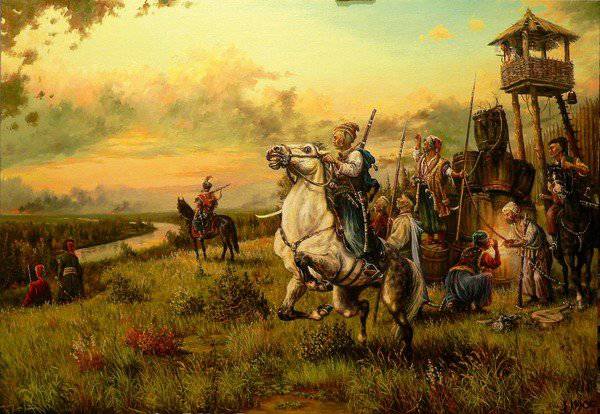
Fig. 4 Cossack cordon
In January, 1794 of the year on the military Rada, which gathered the bunker partnership, of the smoked and military foremen, colonels and chieftains of the Black Sea Troops, according to the old Zaporozhye custom, a lot was drawn, which allotted land plots for the location of the Cossack settlements - Xeni 40. Except for Catherine and Berezan, named in honor of the Empress, and the resounding victory of the Cossacks in the assault Berezan, all other 38 smoking has its former name, when he was Zaporizhia Army. Many of the names of these smokers, which later became known as the villages, have survived to this day. Plastunovskoy hut located on the River Kuban since March 1794 years, near Korsun and Dinskoy smoking. According to the information provided by the smoked chieftain, in January 1801 of the year in Plastunovskiy lived only 291 Cossacks, of which only 44 were married. Constant cross-border clashes with the mountaineers forced blooded to move their families away from the cordon, and in 1814, Plastunovsky nest settled on the Kochety River, where it is today.
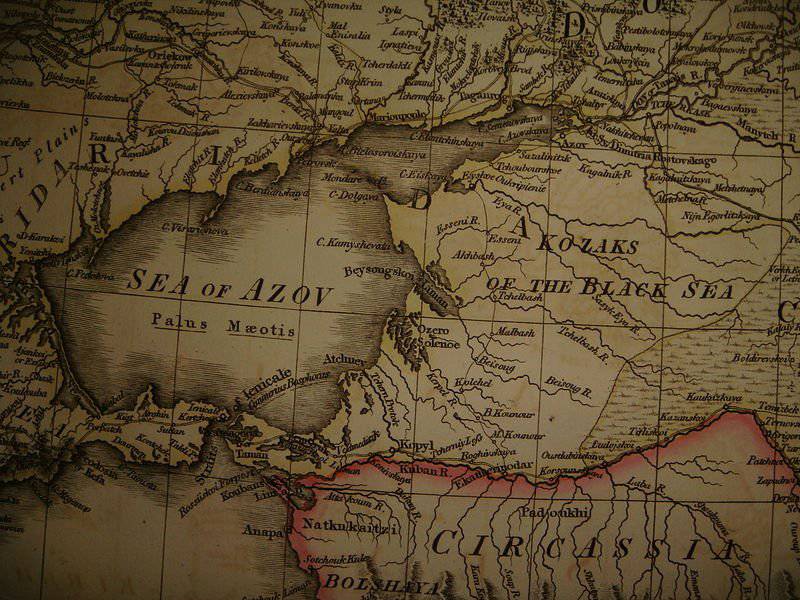
Fig. 5 Black Sea Map
Embracing the space around 30000 sq. miles, the new Black Sea was originally inhabited 25 thousands of souls of both sexes. Therefore, for each migrant accounted for more than a square verst of space. From the very first steps of settling the Black Sea coast, a constant influx of fluent elements began here, and this is quite understandable. Chernomoria needed alien workers who would not own these hands. Since its Cossack population was constantly distracted from military service economy, it is clear that every stranger was welcome here. But the main mass of the resettlement people was given by the government itself to Black Sea coast. At the expense of the Cossacks from the Ukraine, Cossack settlements in the Caucasus were constantly replenished and strengthened. In the 1801, the remnants of the disbanded Katerynoslav troops were sent there from which formed the Caucasian Cossack Regiment (1803 g). In 1808, 15 thousands of former Little Russian Cossacks were ordered to be resettled to the lands of the Black Sea Army, and 1820 thousands more in 25. Satisfying the natural demands of the troops in people, the government, in several stages - in 1801, 1808, 1820 and 1848, ordered resettlement of more 100 000 souls of both sexes from the Little Russian provinces to Black Sea.
So, for fifty years the original population of Black Sea coast, consisting of 25000 both sexes, thanks to government interventions has been increased five times. Behind the Zaporozhian Cossacks, the Black Sea Army was strengthened by the Cossacks of the Slobodsky regiments, the Azov, Budjak, Poltava, Yekaterinoslav, and Dnieper Cossacks. Originally composed of experienced Zaporozhian soldiers hardened in endless wars, the Black Sea army settled in the Kuban grew mainly due to people from the Cossack regions of Ukraine. The worst, most courageous and freedom-loving moved, passive remained by all means. Cossacks left in the Basin, soon melted away in the masses will multiply different tribes of the Ukrainian population and almost lost the fighting Cossack line, leaving only the eternal passion for Buse, drunk and maydanovschine.
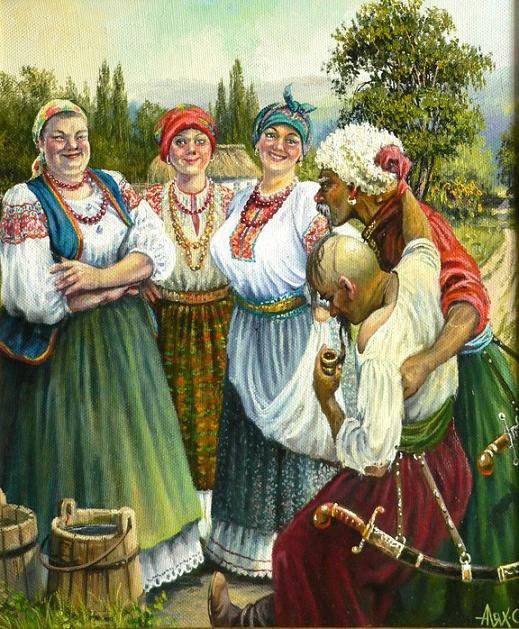
Fig. 6 Return of the Cossacks from the Maidan
Many circumstances have complicated the task of the Cossacks colonization, but that did not stop Black Sea Fleet territory and learn to create an entirely new form of Cossack life, based though were old Cossack ideals, but on a completely different lining. The main beginnings of the dispensation of the troops and the distinctive features of its self-government were predetermined by the Cossacks, included in the instructions and petitions of Cossack deputies who traveled to St. Petersburg, and then almost literally copied into two letters from the Highest granted to the army - from June 30 and July 1 from 1792. On the basis of the first of these letters, the army was a collective legal entity, the land was given to him as a collective property. The army was supposed to a certain salary, granted a free internal trade and the free sale of wine on military lands, granted troop flag and drums, as well as confirmed by the use of other regalia of the former Zaporozhye Sech.
Administratively, the army was subordinated to the Tauride governor, but had its own command, the so-called "army government", consisting of a troop ataman, a judge and a clerk, although later in the letter it was expressed "for the Zemstvo administration of this army for better order and improvement, it was conceived with published institutions on the management of provinces. " But the army government has given "the violence and the punishment of running into an error in the army," and only "major criminals" were commanded to send to the Tauride governor for "condemnation of the law." Finally, the Black Sea army was entrusted with a "vigil and border guard from the attacks of the peoples of the Pukaban". The second diploma, from 1 July, embraced the actual question of the relocation of the Cossacks from beyond the Bug to the Kuban and the award to the foremen of patents for officer ranks. Thus, in the letters, the troops did not have an exact and definite regulation of the device and self-government, but there were very strong grounds for giving the two most important features from the Cossack practice.
Cossacks soon developed in the form of written rules 1794 years, known as the "Order of the public good", a special organization of the Cossack government. As they say in this wonderful document, "... recalling the original state of the troops called Zaporozhtsev ..." Cossacks have established the following important rules:
- In the army there should have been a "army government that would control the army forever," and consisted of a chief ataman, a military judge and a military clerk.
- "For the military residence" founded the city Ekaterinodar. In Ekaterinodar, “for the sake of meeting the troops and running homeless Cossacks,” 40 kurens were organized, of which 38 bore the same names as in Zaporizhzhya Sich.
- All the army was supposed to "settle the villages of smoking in places where smoking is what lot will belong." In each smoking annually, June 29, it was supposed to elect a smoked ataman. Smoking chieftains had to be at bezotluchno smoking, making clothes in the service, to reconcile the litigants and "disassemble unfounded unimportant quarrels and fights," and "the importance of a crime to submit a legal opinion army government."
- Elders without a post were supposed to obey the "chieftain and camaraderie" in their smoking, and the latter, in turn, were instructed to respect the elders.
- for facilities management and the approval of the whole army to the land of "dolgodenstvennomu tranquility of decent order" troop was divided into five districts. To manage the districts in each of them was supposed to "district government", consisting of a colonel, a clerk, the captain, and a coronet, and which had its district seal with the coat of arms. The Cossacks, both official and private, were allowed to plant yards, farms, mills, forests, gardens, vineyards and fish factories on military land and lands. With the settlement in the Black Sea coast Cossacks led their business activities in the spirit of those methods, what characterized the economic life of Zaporozhye. Agriculture was poorly developed, the main industry was originally cattle breeding and fishing. This was facilitated by the natural features of the region. There were so many empty vacant spaces with beautiful pastures that, in a warm climate, cattle could be bred in a significant amount, without much labor and economic care. Horses graze year round on grazing, cattle had to feed hay harvested only for a few days or weeks of the year, even the sheep most of the winter can be satisfied with pasture. However, once established in the province, cattle breeding very soon began to constitute a special craft for the actual farm work. Smoking (ie stanitsa society) were poorer livestock, smoking population belonged to a skinny "series" (public herds) cattle, small "kuschanki" sheep and even fewer horses, so that, for example, when arming to the office, the Cossack -stanichnik often bought in herds horse farmers (i.e. rich Cossack living individual hamlets on the Village lands). The smoked Cossack, therefore, far before the Cossack farmer became a farmer. Baking, even with the frequent distraction of workers' hands by the frontier, "cordon" service, although it could not provide especially large material resources, but served as the main means of feeding the Cossack family.
Resettlement Black Sea sailors were intended to guard the part of the line that ran along the Kuban and Terek from the Black Sea to Kaspiyckogo. About continuous protection of this line Cossacks fussed Potemkin Tauride and pre-strengthening which has been produced by Suvorov. From this line share the Black Sea accounted for about 260 Kuban miles along with its countless bends and turns of a fair source current near Vasyurinskaya village, and to the banks of the Black Sea. It must be said that at that time its main channel Kuban flowed not to the Azov and the Black Sea between Anapa and Taman. The entire northern slope of the Caucasus Mountains and the left bank Zakuban plains were inhabited along the border line by mountain tribes, always hostile to the Cossacks and always ready to make an attack on his home. Therefore, on the shoulders of the Black Sea coast lay a heavy burden of protecting the border line at every point, turn, bend, wherever there was even the slightest opportunity for the Highlander to cross over to Cossack possessions. Over 260 kilometers border line was arranged around 60 posts, cordons and batteries and more than one hundred pickets. Under the terms of the peace treaty, for its part, Turkey was also obliged to restrain the militant impulses of the Circassian tribes, not to allow them to open hostility and attacks on Cossack settlements. To this end, in the Turkish fortress of Anapa, a specially appointed Pasha had a permanent residence.
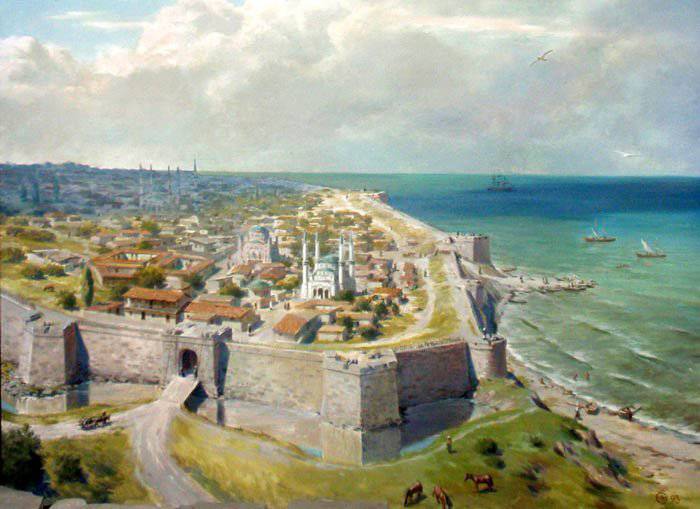
Fig. 7 Turkish fortress Anapa
The reality, however, testified to the complete impotence of the Turkish authorities in curbing the warlike Highlanders. Circassian raids in small lots on Black Sea coast continued almost continuously. The Circassians took Cossack cattle and took the population captive. But the Turkish Pasha was either inactive at this time, or, despite all his desire, could not do anything. The Circassians did not want to obey him, refused, on his orders, to return the looted cattle and prisoners to the Cossacks. When Pasha threatened them with military measures, they boldly answered that the Circassians were a free people, who did not recognize any authority, either Russian or Turkish, and would weapons in the hands to defend their freedom from any encroachment on it by the Turkish official. It even went so far that the Cossacks had to protect Turkish officials from the subjects subordinate to the Turkish government. In such circumstances, a Turkish pasha drove his supreme power over the mountaineers to the fact that in some cases the Cossacks warned about ready to have raids mountaineers, while others asked the Cossack authorities to settle accounts with the Circassians on your own with the help of military force. But relations between Russia and Turkey, as the same Pasha, obliged to keep the Circassians from raids, became a little strained, secretly incited the Circassian tribes to hostile actions against the Cossacks. Cossacks, in the end, had to stay with the mountaineers their own policies - to pay for the raid raid and destruction of ruin. Dressed up military expedition Cossacks went over to the land of mountaineers, ruined villages, burnt bread and hay, the cattle taken away, taken prisoner population, in one word, repeated the same thing that made the Circassians in the Cossack lands. Cruel and merciless military actions in the spirit of that time were raging.
Thus, soon, the resettled Black Sea Army was in the crucible of the outbreak of the Caucasian War. But that's another story. After the end of the Caucasian War in 1860, all the Cossack troops from the mouth of the Terek to the mouth of the Kuban were divided into 2 troops, Kuban and Terek. Kuban army was created on the basis of the Black Sea, with the addition of two regiments of the Caucasian linear forces, has long lived in the middle and upper reaches of the Kuban. These Cossacks are called Kuban lineans. The first of them - the Kuban regiment. Its members were descendants of the Don and Volga Cossacks, who migrated to the middle Kuban immediately after the right bank of the Kuban entered the Russian 1780-s. It was originally planned to resettle at Kuban most of the Don Army, but the decision provoked a storm of protest on the Don. It was then that in the 1790 year, Anton Holovaty for the first time suggested Black Seamen to leave Budzhak for the Kuban. The second is the Khoper regiment. This group of Cossacks originally from 1444 year lived between the rivers Hopper and Medveditsa. After the uprising of Bulavin in 1708, the land of the Khoper Cossacks was heavily cleaned by Peter I. It was then that part of the Bulavinians left for the Kuban, swore to the Crimean khan, and formed a rogue Cossack community - the Nekrasov Cossacks. Later, when the Russian troops attacked the North Caucasus, they went to Turkey forever. Despite the relentless cleaning Chopra Peter's punitive after bulavin rebellion in 1716, the Cossacks returned there. They were involved in the Northern War, they caused a stir there were pardoned, and the governor of Voronezh, they were allowed to build Novohoperskaya fortress.
For half a century Hoporsky regiment has grown again. In the summer of 1777, during the construction of the Azov-Mozdok line, the Khoper Cossacks were resettled in the North Caucasus, where they fought against Kabarda and founded the fortress of Stavropol. In the 1828, after the conquest of the Karachai, they moved again and settled permanently on the top of the Kuban. These Cossacks, by the way, were part of the first Russian expedition to Elbrus in 1829. The seniority of the newly formed Kuban army was borrowed precisely from the Khoper Cossacks, as the oldest. In the 1696 year hoportsy distinguished themselves in the capture of Azov during the Azov campaigns of Peter I, and this fact is the year of the seniority of the Kuban troops. But the history of the Lineans is more connected with the history of the Caucasian Linear Army and its successor, the Terek Cossack Army. And this is a completely different story.
Materials used:
Gordeev A.A. History of the Cossacks
Shcherbina F.A. History of the Kuban Cossacks
Information